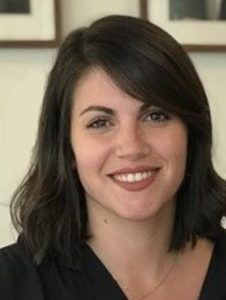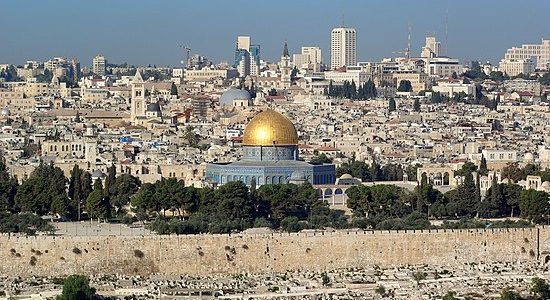
On May 9, Israel will celebrate Yom Yerushalayim. Tell us more about this day and its significance.
Prior to the founding of the State of Israel, Jerusalem had different rulers, but it was always part of the prayer and the identity of the Jewish people. We have always called Jerusalem our eternal capital.
All the synagogues of the world are built in such a way that the prayers are directed towards Jerusalem, and during our two most important festivals–Pesach and Yom Kipur—we wish to meet each other in Jerusalem next year. Today, Jerusalem is also mentioned in our anthem: “The Land of Zion and Jerusalem” (in Hebrew, Zion is used as a synonym for the city of Jerusalem and the land of Israel).
On June 27, 1967, Israel won the Six-Day War and regained its historic capital, Jerusalem, which was later recognized as the official capital of Israel by the country’s parliament. Twenty years later, on the 28th day of the month of Iyar in 1998, Yom Yerushalayim was declared a public holiday.
This day symbolizes a unique, historical connection that spans thousands of years between the city and the Jewish nation. The recovery of Jerusalem meant the return of freedom to pray again at the Western Border. The Kotel (Western Wall in Hebrew) is the only remains of the temple and is considered one of the holiest places in the Jewish nation. People not only pray here, but also leave notes with the greatest desires are often placing them in the cracks of the wall stones. For this reason, we also call it the Wall of Tears.
This wall is also depicted in the city coat of arms. A lion standing on its hind legs is visible in the background of the masonry of the Western Wall, and from the sides olive branches symbolizing peace. The lion was also a symbol of the tribe of Judah. This tribe later established the kingdom of Judah with the capital Jerusalem.
How do people celebrate this day?
Prayer is a very important highlight of today. People from all over the country travel to the Western Border to pray. The city also hosts ceremonies attended by the prime minister and other ministers. The national commemoration ceremony on this day is very important. Since 2003, we remember the Ethiopian Jewish community who crossed North Africa on foot to reach Israel, and honor all those who died on this long and difficult journey.
On this day the city hosts an impressive traditional parade which attracts many people from all over the country. Imagine a sea of Israeli flags, people around you singing traditional and modern songs, traveling through ancient gates towards the Western Border.
This year, thanks to a highly successful vaccination campaign, Yom Yerushalyiam will be celebrated as usual again.
What is Jerusalem like today?
I myself was born and raised in Jerusalem. This city has, so to speak, shaped me as a personality. I remember myself as a child walking the ancient city roads, the snow that is a distinctive feature of Jerusalem, the Mahne-Yehuda market, songs and synagogues, but I also remember the overwhelming fear as I grew up during the second Intifada.
Today Jerusalem is a unique place. Probably everyone in the world would discover a deeper connection with this city: perhaps because of their professed religion, history, or maybe because of the nature and architecture of Jerusalem. Probably this extraordinary feature of the city is the reason why Jerusalem is becoming the object of various controversies.
Jerusalem is a city with many faces and an extremely rich cultural life. Did you know that Jews have as many as 70 names for this city? Among them: the City of God (this name is also found in the Bible), the navel of the world, the City of David, the City of the Fathers, Zion, the City of Justice, and others. Jerusalem is like the microcosm of Israel. This city is like a modern mosaic of cultures and people. It is a city where old and new meet, where the unique and innovative cuisine thrives. It is a city for children and seniors, artists and pilgrims. This year we decided to tell this unique history of the city: In Vilnius, in cooperation with the Lithuanian Theater, Music and Film Museum, we are planning an exhibition of modern Jerusalem photographs that will convey the city’s color and diversity.
It is important to emphasize that this city is significant for Christians, Jews and Muslims. There is a very delicate balance between the latter two communities. So delicate that, in order not to break it, both sides require maintaining mutual respect. Due to the high political and religious sensitivity, the citizens of Jerusalem maintain this balance in order to coexist with respect and peace. Unfortunately, there are cases where one of the parties violates it. Then, the differences between them break through in a very destructive way.
Vilnius is also known as the Jerusalem of the North. What does this name mean to you?
The Jewish community in Vilnius used to be one of the most influential in the world. It was one of the first places in Europe where the king granted rights to the local Jewish community. Many educated Jews from all over Europe used to come to study in Lithuanian yeshivas. In this way, Lithuania became a center of religious studies. Many religious leaders were born or came to live in Vilnius, the most famous of them the Vilna Gaon. To this day, his works are very significant to religious communities. Prior to the establishment of Israel, Lithuania was also a cradle of political Zionist movements.
Unfortunately, during the Holocaust, 95% of the Jewish community were killed and many ancient, incredibly beautiful synagogues were destroyed. Sadly, during the Holocaust, almost all of the vibrant and rich ancient Jewish history and culture was lost.
Today, although the Lithuanian Jewish community is much smaller than it once was, they can be proud in continuing the history of this venerable community and maintaining the light of the Jerusalem of the North.


